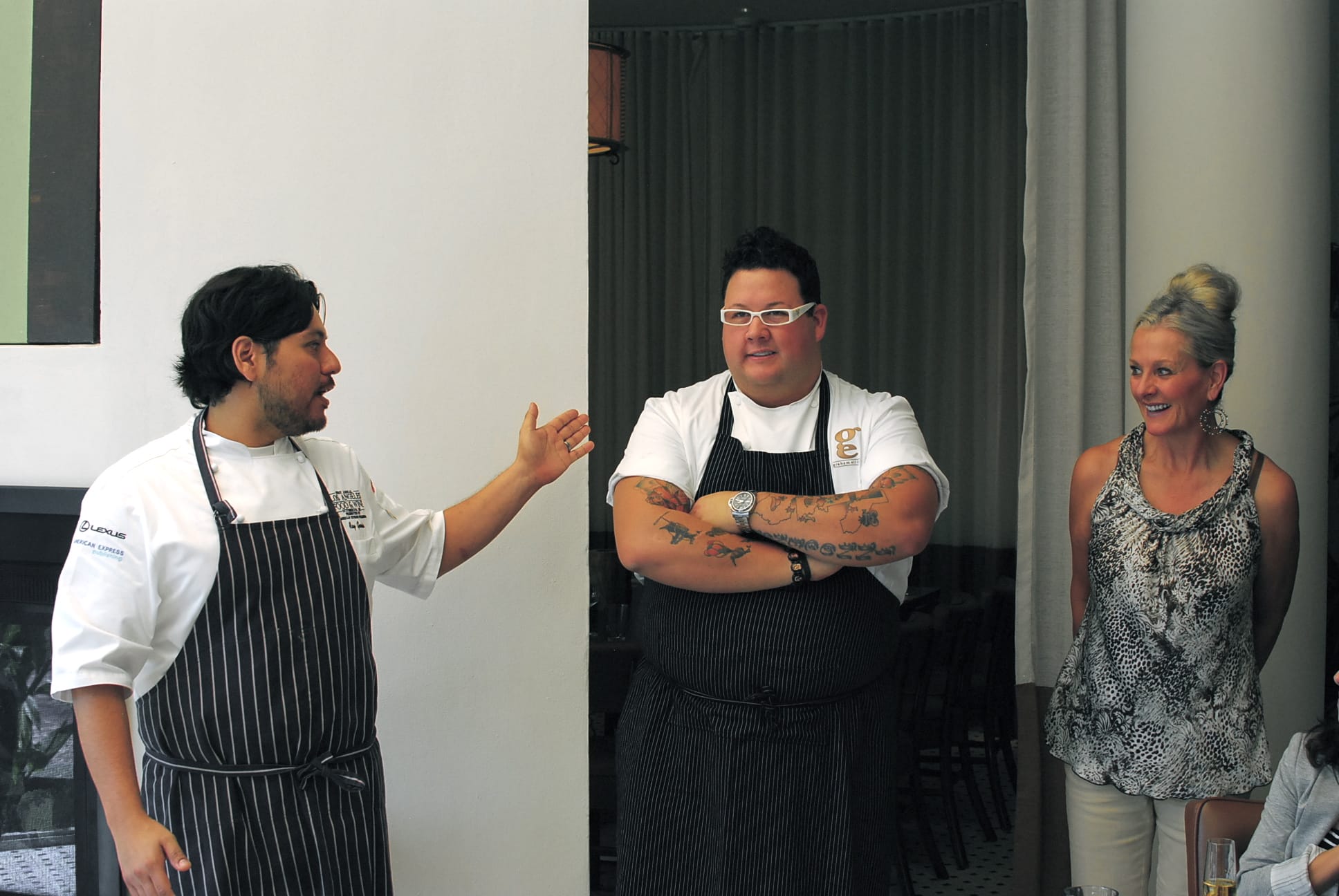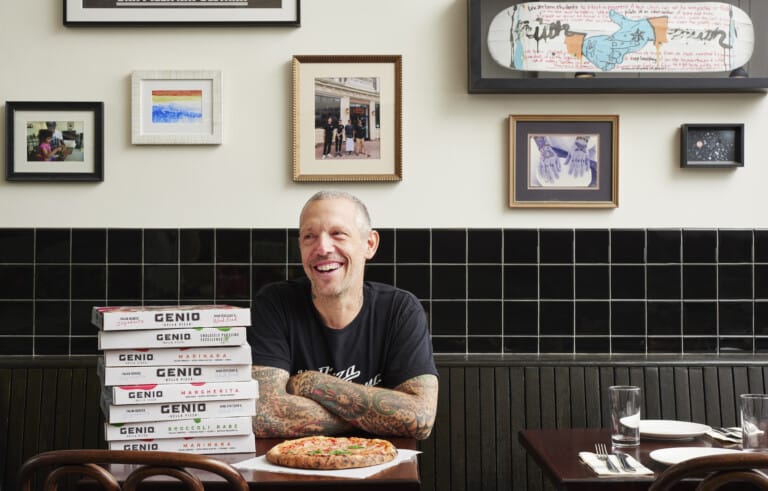FIG Santa Monica chef Ray Garcia hosted Chicago chef Graham Elliot and Napa Valley winemaker Beth Nickel at the LAFW Simply Seasonal Lunch on October 14, demonstrating two Garcia hallmarks: seasonal flair and culinary outreach. He’s an L.A. native who attended Le Cordon Bleu in Pasadena and worked under Chefs Sean Hardy and Bill Bracken at The Belvedere for almost seven years. He also staged with Douglas Keane at Cyrus and Thomas Keller at The French Laundry before opening FIG inside Santa Monica’s Fairmont Miramar Hotel & Bungalows in 2008. After the October 14 meal, Chef Garcia joined me to share more culinary insights.
What’s the biggest challenge about operating a restaurant in a hotel?
Well, I see it as more of a benefit. At FIG, about 90% of our clientele is local, and they’ve been such huge supporters of what we do here, and it allows us to do that, especially for dinner. It’s not so much a matter of being a hotel restaurant, we’re just trying to be a restaurant that makes good food, and just so happens to be in a hotel. It pleases the hotel guest, and it really hits the palates of the locals.
What’s the criteria for a dish that goes on your menu here?
The number one thing is that it has to taste good. People ask where inspiration comes from, and it can come from anywhere and anyone. Sometimes it comes directly from me and I have a vision and I try it out and I make it work. Sometimes I’ll watch what the cooks are doing or eating for their own lunch and I’ll get an idea – ooh, those flavors work well together, let’s define it and clean it up a little bit to get it on a plate that we’ll serve to a guest. It’s an interesting mix of flavors, and just keeping the information flowing in the kitchen and having an eager and inspired, enthusiastic staff that will bring a lot of things to the table that you can put on the menu.
Have staff meals ended up becoming menu items?
Yeah, there have been staff meals that ended up becoming menu items. We had – recently – it’s not on there now, but we had a seafood pot that was sort of a mixture of shrimp, mussels, clams, and scallops and some fish, and it was a night we had leftover bits and pieces, and some of the trimmings that the cooks would serve just to themselves. Of course we don’t want to serve the trimmings to the guests, so we created a dish with the same spicy, acidic cilantro tomatillo jalapeno profile and made something people could really enjoy, and when we put it in front of them on a plate, it still looked visually appealing.
Was there a particular moment when you knew you’d become a professional chef?
You know, I can’t really say there was one defining moment. If anything, it was years ago, before I even had dreams of becoming a chef. A friend of mine, who was a sushi chef at the time and my roommate at school, let me try foie gras for the first time. And I was just starting to get interested in food, really. I grew up loving food, but not really going out to eat to try exotic foods, so this was the first time I tried something that I hadn’t had anything like it before in the past. To have a great steak – okay, that’s a great steak – I’d had beef before, chicken, but to have this thing that was salty and crunchy and soft and fatty, all these things in one bite, that blew me away. That was probably the defining moment. “I love food, and if I do it professionally or not, I need to find out more about things like foie gras.”
Where were you in school at the time?
I was still at UCLA at the time. I was doing my undergrad at UCLA.
What was your major?
I have two degrees that I got from UCLA, one in Political Science and one in Business Economics.
Do you feel like either of those degrees helps you in what you’re doing now?
A little bit. I think just the whole analytical thinking and the college experience definitely helps. It helped me to be well rounded, open minded. I did a lot of waiter jobs when I was in college, so that also helped me to get an idea of the front of the house, get the balance between the two and get a better understanding of what goes into everyone’s job, see the restaurant as a whole and not just, “This is the kitchen, that’s the only thing that matters.”
What was your very first night like working in a professional kitchen, and where was it?
My first night in a serious kitchen probably would have been the Peninsula Hotel, The Belvedere restaurant. I started off working days, as somebody’s assistant. I started off at the bottom of the bottom, so I was the garde manger’s assistant. It was frightening. It was challenging, and exciting all at the same time. The chef said there was no way I’d make it past six weeks, so I wanted to make sure I proved him wrong.
If that was your first night in a serious restaurant, what was your first night like in a not serious restaurant?
Oh I’m sure it was fun and joking around. The first seven years of my career was waiting tables, so the first night I ever spent in a restaurant was in Glendale at Chuy’s Mexican restaurant, which doesn’t exist anymore. I was in charge of shoveling chips. I was the chip guy, in charge of refilling giant bins of chips and getting them ready for them to go out to guests, and filling up salsas. That was my job, chips and salsa boy, for the first few months.
It must have been high volume of chips and salsa.
You can’t underestimate how much people will eat chips and salsa.
What do you look for when you’re hiring somebody to work in your kitchen?









Leave a Comment